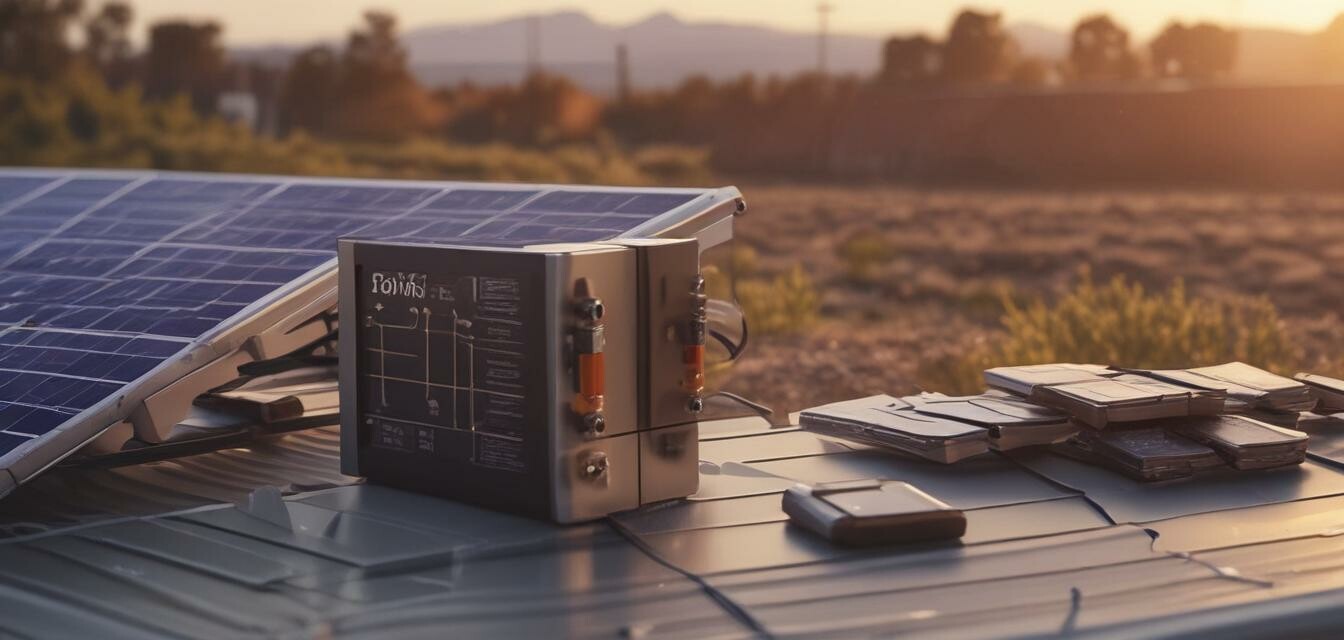
DIY Solar Battery Management System: Monitor and Protect
Key Takeaways
- Monitoring your solar battery system is crucial for longevity and performance.
- A DIY Battery Management System (BMS) can help you optimize battery usage.
- Important components of a BMS include voltage monitors, a display, and temperature sensors.
- Regular maintenance and monitoring can extend the life of your solar batteries.
If you’ve decided to take the plunge into solar energy, it’s essential to understand how to manage your battery system effectively. A DIY Solar Battery Management System (BMS) can help you monitor and protect your solar battery bank, ensuring that your investment lasts as long as possible. In this article, we will explore how to create a reliable BMS and the key components that it should include.
What is a Battery Management System?
A Battery Management System (BMS) is a set of electronic circuits that manages a rechargeable battery (or battery pack). Its main functions include protecting the battery, monitoring its performance, and ensuring optimal operation. A well-designed BMS can help prevent battery overheating, overcharging, and deep discharging, which can lead to battery degradation.
Why Build a DIY Solar Battery Management System?
Building a BMS yourself has many benefits:
- Cost-effective: DIY systems can save you money compared to commercial systems.
- Customization: You can tailor the system to meet your specific needs.
- Learning experience: Building a BMS offers valuable insights into how battery systems work.
Essential Components of a DIY BMS
To create an efficient DIY Solar Battery Management System, you’ll need several key components:
| Component | Description | Function |
|---|---|---|
| Voltage Monitor | Measures the voltage of each battery cell. | Prevents overcharging and deep discharging. |
| Temperature Sensor | Monitors the temperature of your battery bank. | Protects against overheating. |
| Display Interface | Shows battery health and performance data. | Makes monitoring easy and user-friendly. |
| Balancing Circuit | Ensures all cells in a battery bank charge evenly. | Improves battery longevity. |
| Microcontroller | Acts as the brain of your BMS. | Processes data from sensors and controls the system. |
Steps to Build Your DIY Solar Battery Management System
Now that you understand the essential components, here’s a step-by-step guide to building your BMS:
- Gather your tools and materials: You will need a soldering iron, wires, a microcontroller (like Arduino), voltage and temperature sensors, and a display.
- Assemble the monitoring circuit: Connect the voltage monitors to each cell in your battery bank.
- Add temperature sensors: Place these on the battery cells or in the enclosure to monitor heat.
- Program the microcontroller: Write code to read sensor data and display it on your interface.
- Test the system: Ensure everything is working correctly and adjust your code as necessary.
- Install your BMS: Secure it in a safe location near your battery bank.
Pros
- Cost savings compared to commercial options.
- Custom-built to meet unique requirements.
- Enhanced understanding of battery systems.
Cons
- Requires technical skills and knowledge.
- Time-consuming to build.
- Potential for mistakes if components are not assembled correctly.
Maintaining Your DIY Solar Battery Management System
Once your BMS is up and running, you need to regularly check its performance. Here’s how to keep your system in optimal condition:
- Regularly inspect the connections for wear or corrosion.
- Test the sensors periodically to ensure accurate readings.
- Update the software in the microcontroller as needed for improvements.
Conclusion
A DIY Solar Battery Management System is an excellent way to take control of your solar energy investment. By effectively monitoring and protecting your battery bank, you can enhance its longevity and ensure optimal operation. For more guidance on solar systems, check out our Buying Guides for resources on the latest equipment and systems.
Related Projects
Interested in other DIY projects? Explore these:


